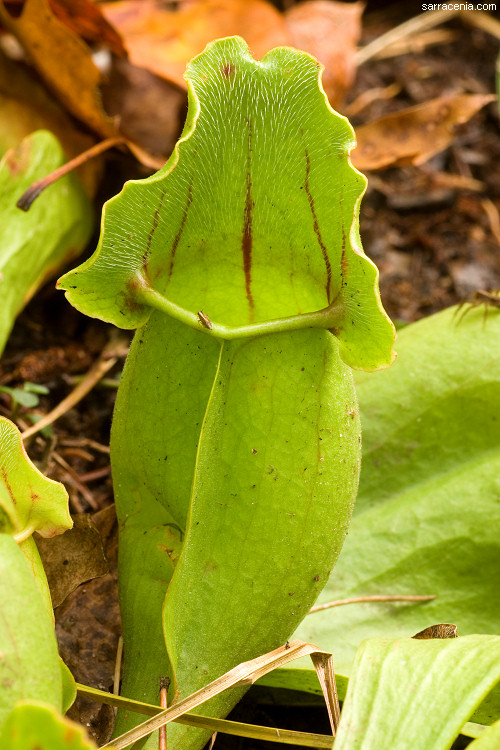
Greener pitchers:
Phil knows that I absolutely adore seeing carnivorous plants in the wild, so he took me to a nearby site where
Sarracenia purpurea subsp.
venosa still persists.
This site was the northernmost population of Sarracenia purpurea in Virginia. That sounds interesting,
but there were only
two plants present! That's not because Phil made a bad choice for us--the sad truth is that
carnivorous plants are having a hell of a time surviving in the USA, and the situation is particularly bad in Virginia.
Carnivorous plant populations are winking out on a yearly basis.
We headed to lunch, the tab for which Phil kindly picked up. The alligator sausage sandwiches were quite memorable!
The day was ending, and it was time to go. Phil printed out some maps to bookstores for us (we needed to
replace the birding field guides that some soulless bastard had stolen from Beth), so with MapQuest pages in hand,
we bade Phil farewell and headed on
our way.
For the next few days of our trip, we birdwatched in coastal Virginia areas; carnivorous plants were nowhere to be found. Still,
salvation loomed as we were to visit the U.S. Botanic Gardens in Washington, D.C. next. I had high hopes that we would be wowed
by spectacular plants there.
Alas, we were greatly disappointed. As is typical for most
conservatory collections, the carnivorous plant holdings were small and poorly grown.
Despite my enthusiasm and hope, there was nothing there worth photographing.
But there was one other thing that Beth and I saw that was surely the high point of our trip to D.C.
I knew IT was there, waiting for us. I knew IT was in the
Smithsonian Air and Space Museum. So when we arrived in D.C., we headed directly for
IT, and oh lord, there IT was....